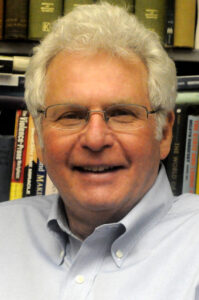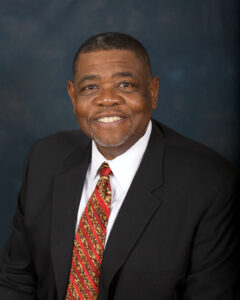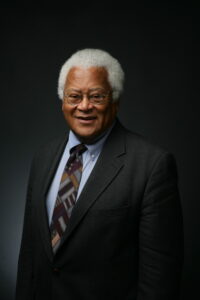SUMMARY
As seen in the Los Angeles Times and Las Vegas Sun (March 28, 2021).
UNIFYING THEME: Race in America: Toward a Nation of Equality
The Nashville model is a replicable model - if not in all its details, then certainly in its principles - for contemporary justice movements. It shows that clearly articulated objectives are crucial to building credibility. The effectiveness of the Nashville campaign was rooted in the intensive workshops on nonviolence that preceded the actual sit-ins.
by Daniel B. Cornfield, Dennis C. Dickerson, Larry W. Isaac and Rev. James M. Lawson, Jr.
White supremacists have violently opposed every advance toward racial justice and social inclusion in the United States since the Emancipation Proclamation. The violent, racist desecration of the Capitol by unmasked vigilantes during the pandemic on Jan. 6 was no exception.
The winning Biden-Harris team readily took the reins, answering the political will of voters to build a more inclusive society. The new administration gives us an opportunity to advance justice and social welfare, but it cannot on its own root out white supremacy and mobilize the diverse U.S. electorate.
Dismantling white supremacy and building a broad platform of social policy requires a long view and an understanding of the communities in urban centers, suburban towns and rural counties across our country.
During the late 1950s and early 1960s, the Nashville nonviolent movement modeled for the nation a community-centered approach to dismantling Jim Crow. Forged in the momentum of the Montgomery bus boycott in 1955, the Nashville movement - with its lunch counter sit-ins - was inspired by the Rev. Martin Luther King Jr.'s work in the Montgomery campaign and devised at his behest by the nonviolent movement's chief strategist, the Rev. James M. Lawson Jr.

King praised the Nashville movement in 1960 as "the best organized and the most disciplined in the Southland." In 1958, Lawson, along with his mentors at the Fellowship of Reconciliation and colleagues at the Southern Christian Leadership Conference, established Nashville as the nonviolence training center for the SCLC's multi-city nonviolent campaign to desegregate the South. Nashville was considered an optimal training site because of its "soft" version of Jim Crow and central location in the South.
The Nashville movement would soon transform Nashville into a pulsating hub of social activism that coursed through the networks of the SCLC, Fellowship of Reconciliation, Student Nonviolent Coordinating Committee, Congress of Racial Equality, and the National Association for the Advancement of Colored People throughout the South.
Trained by Lawson in nonviolence praxis, a group of Nashville student activists, including Marion Barry, James Bevel, Angeline Butler, Pauline Knight, Bernard Lafayette, John Lewis, Diane Nash, Gloria Johnson Powell and C.T. Vivian, mobilized hundreds of college students to desegregate Nashville and participate in important campaigns throughout the 1960s.
The Nashville student leaders participated in the formation of SNCC in 1960; the 1963 Birmingham campaign; the 1963 March on Washington; the Freedom Summer campaign of 1964; voting rights actions prior to and involvement in the 1965 Selma campaign; the Chicago campaign in 1966; and the Memphis sanitation workers strike of 1968. The Southern nonviolent movement not only dismantled Jim Crow in downtown Nashville by 1962 but, by many accounts, led to the passage of the landmark Civil Rights Act of 1964 and Voting Rights Act of 1965.
Lawson's four-stage Gandhian methodology formed the core of the "Nashville model" of nonviolent mobilization. Throughout the "focus" stage in 1958 and 1959, Lawson met regularly with Black Nashvillians to hear their concerns and priorities to design a nonviolent strategy specifically for addressing them. The indignity of segregated shopping in downtown department stores, and a Fisk University economist's calculation of the substantial level of Black purchasing power in Nashville, led to a strategy of sit-ins at whites-only lunch counters, an Easter boycott of downtown department stores, stand-ins at movie theaters, and protest marches.
During the "negotiation," "direct-action" and "evaluation" stages of 1959-1962, Lawson and others recruited hundreds of college students, mainly from the local cluster of historically black colleges and universities, who formed a central committee and throngs of movement soldiers. In intensive workshops, Lawson prepared students, pastors and others inspired by the Montgomery bus boycott for the nonviolent campaign to desegregate downtown Nashville, and in the necessary personal and movement discipline for withstanding any hostilities the campaign would face.
The Nashville campaign - along with the bombing in 1960 of the home of Z. Alexander Looby, a prominent Black lawyer and city councilman - would pressure Nashville Mayor Ben West to renounce racial segregation at a public confrontation with student demonstrators on the steps of City Hall in 1960.
The Nashville model is a replicable model - if not in all its details, then certainly in its principles - for contemporary justice movements. It shows that clearly articulated objectives are crucial to building credibility. The effectiveness of the Nashville campaign was rooted in the intensive workshops on nonviolence that preceded the actual sit-ins.
This insurgent activism, whether among workers or disenfranchised peoples, drew from disciplined preparation in the philosophy and techniques of this moral methodology. Additionally, success required identifying the issues on which to focus from the wider community, not singularly constructed by movement leaders.
In Nashville, alliances forged among students, Black women and local clergy in SCLC's Nashville affiliate energized the sit-ins. These intergenerational interactions were at the foundation of the campaign. And the Nashville movement was able to spread its vision and tactics throughout the South because it set an example of how to forge a coalition of social justice organizations - each with their own constituencies - within that city and elsewhere in the South.
Most importantly, the movement had a deeply self-reflective and measured approach for discerning and addressing contradictions between the values a local community espouses and the lived experiences of its residents.
Further reading:
- Daniel B. Cornfield, Jonathan S. Coley, Larry W. Isaac, and Dennis C. Dickerson. 2019. "Occupational Activism and Race Desegregation at Work: Activist Careers after the Nonviolent Nashville Civil Rights Movement." Pp. 217-248 in Research in the Sociology of Work, vol. 32, special issue on "Race, Identity, and Work."
- Dennis C. Dickerson, 2020, THE AFRICAN METHODIST EPISCOPAL CHURCH: A HISTORY (New York, Cambridge University Press, 2020)
 |  |  |  |
(L to R) Daniel B. Cornfield is a professor of sociology, Dennis C. Dickerson is a professor of history and Larry W. Isaac is a professor of sociology and political economy at Vanderbilt University. Rev. James M. Lawson Jr. is a Vanderbilt University Distinguished Professor, emeritus. They are co-writing a book on the origins and impact of the Nashville movement.